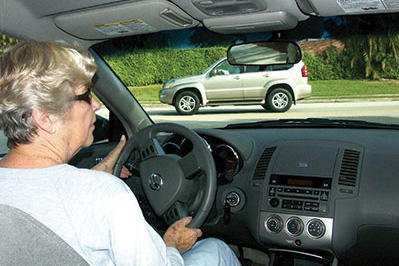Content provided courtesy of USAA.
Crash rates among older drivers have improved in recent years, but the fact remains that advancing age can bring impairments that affect driving ability.
According to the Insurance Institute for Highway Safety, drivers age 70 and older have higher crash rates per mile traveled than middle-aged drivers, though not as high as young drivers. Property damage liability claims and collision claims per insured year start increasing after about age 65. Moreover, the U.S. Census Bureau reports that the population 70 and older is projected to increase from 29.1 million in 2012 to 52.7 million in 2030, implying a dramatic increase of older drivers on the road.
So whether you find yourself in this category or approaching the crest, it's smart to take steps to reduce your risks and help protect others on the road.
Guidance for the Golden Years
Here's a mix of guidance from reliable sources to help older drivers improve their driving.
1. Be Self-Aware
Be honest with yourself. Do you increasingly find driving to be scary or confusing? Have you experienced a crash or a near-miss recently or been pulled over for traffic violations? Are you suffering from any illnesses or taking medications that could impair your ability to drive? Answering yes doesn't necessarily mean you have to hang up the keys altogether, but it could indicate that it's time to take a closer look at how, when, where and what you drive.
2. Adopt Safer Habits
Even a few small changes to your driving routines could keep you much safer. For example:
- Plan your trips to avoid heavy traffic.
- Avoid driving at dawn, dusk and at night.
- Always wear your prescription glasses.
- Keep your windshield, mirrors and headlights clean.
- Increase following distance to allow for more reaction time.
- Scan far down the road for potential hazards.
- Avoid unprotected left turns, in which you have to yield to oncoming traffic, when possible.
- Adjust your driver's side mirror to eliminate the blind spot.
3. Take Care of Your Body
Driving is as much physical as it is mental. To drive safely, you must be able to see well, sit up straight, turn the steering wheel easily, pivot your head quickly, brake hard and perform other motions. For these reasons, it's important to see your doctor each year for a thorough physical and eye exam.
4. Upgrade Your Vehicle
Newer vehicles come equipped with advanced technologies — such as electronic stability control, adaptive headlights and crash avoidance systems — any of which could be a lifesaver for older drivers.










